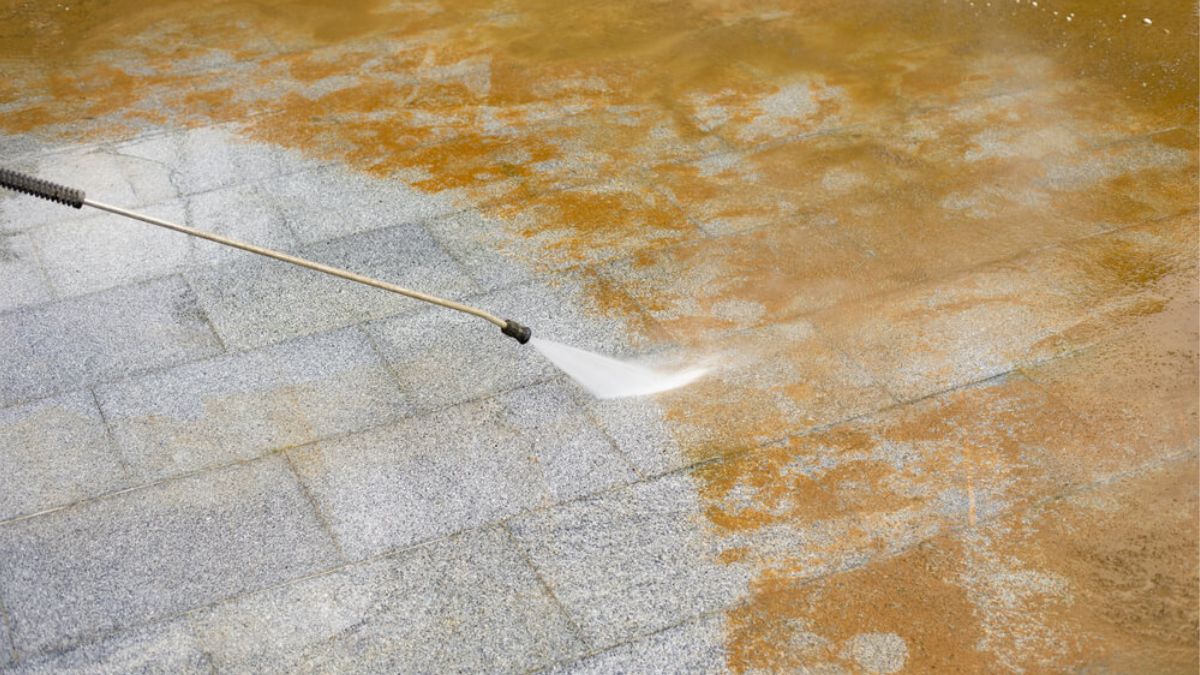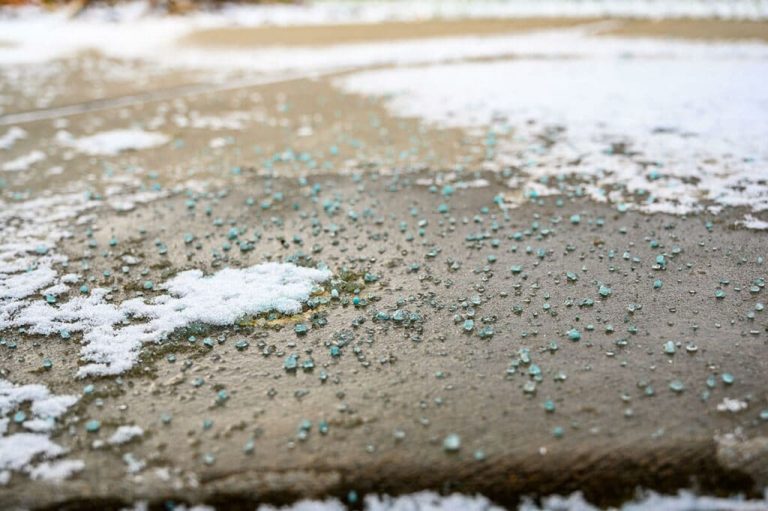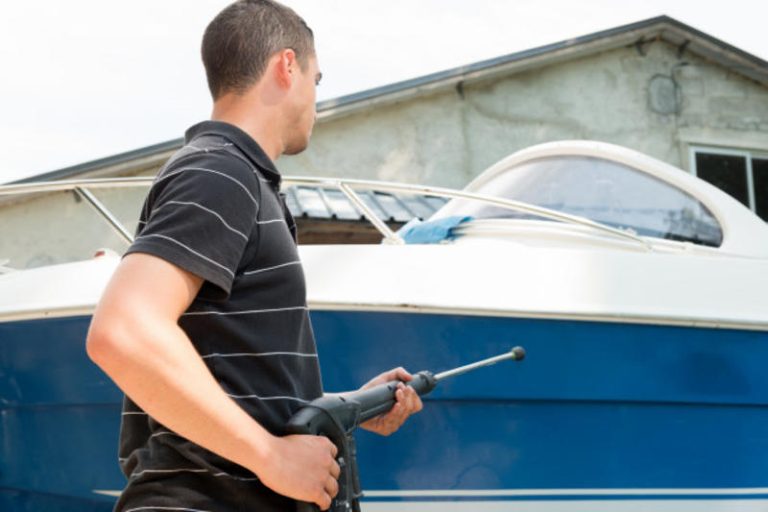
Rust stains are some of the most stubborn eyesores you can encounter on concrete driveways, sidewalks, patios, or even metal surfaces like railings and fences. Whether they’re from an old sprinkler system, metal patio furniture, or leaking pipes, these stains can leave a brownish-red mark that seems impossible to scrub off.
So the big question is: Can power washing remove rust stains? The short answer is — yes, but not always on its own. Power washing can play a key role in removing rust, especially when paired with the right cleaning solutions and technique.
Let’s break down how to tackle rust the right way using power washing 💪💧
🧬 What Causes Rust Stains?
Rust is the result of oxidation—when iron, water, and oxygen combine. This chemical reaction leaves behind iron oxide, which appears as reddish-brown streaks or blotches.
Some common sources of rust stains around the home include:
- Metal lawn furniture left on wet concrete
- Leaky outdoor faucets or irrigation pipes
- Battery acid spills from golf carts or lawn mowers
- Rusty nails or fasteners in concrete or stucco
- Metal planters or tools
Once the rust bonds to porous surfaces like concrete, it can soak in and discolor deeply, making it difficult to remove with pressure alone.
🧼 Will Power Washing Alone Work?
Power washing can help loosen surface-level rust stains, especially if they’re fresh. A pressure washer can blast away the top layer of debris, dust, and iron residue. However, it’s usually not enough to remove deep, embedded stains in porous materials like concrete.
In most cases, you’ll need to pair power washing with a rust remover or specialty cleaner to fully eliminate the stain.
🧪 Best Rust Removers to Use with Power Washing
There are several cleaning agents designed to break down iron oxide without damaging the surface underneath. Look for:
- Oxalic acid-based cleaners (very effective on concrete)
- Rust-specific commercial cleaners (brands like Iron OUT, F9 BARC, or Singerman Labs)
- Eco-friendly or plant-safe formulas (if working near landscaping)
🛑 Avoid using bleach or vinegar. They won’t dissolve rust effectively and can make the stain worse on some surfaces.
💡 Step-by-Step Rust Removal with Power Washing
- Identify the source
Before you clean the stain, stop it from recurring. Move metal objects, fix leaks, or replace rusty fixtures. - Pre-wet the area
Spray the surface with water to prepare it for treatment and help the cleaner absorb evenly. - Apply rust remover
Use a sprayer or brush to apply your cleaner. Let it sit for 5–15 minutes depending on product directions. - Scrub if needed
For deep stains, use a stiff-bristle brush to agitate the cleaner and help it penetrate the concrete or surface. - Power wash the area
Use a pressure washer with a fan tip nozzle at around 2,000–3,000 PSI. Keep the wand moving to avoid etching the surface. - Rinse thoroughly
Remove all residue, then check for remaining stains. Repeat the process if needed.
🌿 Tip: If cleaning near plants, rinse surrounding areas with clean water before and after to protect roots.
Browse Amazon Here For Popular Rust Removers
⚠️ Caution: Don’t Overdo the Pressure
While power washing is effective, going overboard can etch or damage surfaces like:
- Decorative or stamped concrete
- Painted surfaces
- Brick or masonry
- Soft natural stone
Use a medium-pressure setting and keep the spray head moving to avoid creating permanent marks.
🧽 Rust on Metal Surfaces
If you’re dealing with rust on metal railings, fences, or furniture, power washing can help—but follow up with:
- Rust converter or primer
- Paint or sealant to prevent future rusting
- Sanding or wire brushing beforehand if the rust is heavy
💡 Power washing will remove loose rust flakes and old paint, prepping the surface for treatment.
🚫 When Power Washing Isn’t Enough
In rare cases, deep rust stains may be too embedded to remove entirely. If the rust has been present for years or the concrete is heavily porous, full restoration may require:
- Concrete resurfacing or grinding
- Professional stain removal services
- Painting or sealing over the area
✅ Final Thoughts
Power washing is a powerful tool against rust stains—but it works best as part of a strategy, not a one-size-fits-all solution. When used alongside the right cleaners and techniques, you can restore your concrete or metal surfaces and eliminate ugly rust marks for good.
Just remember: prep properly, use the right product, and don’t rely on pressure alone. Your surfaces will thank you. 🧼💪🧱






